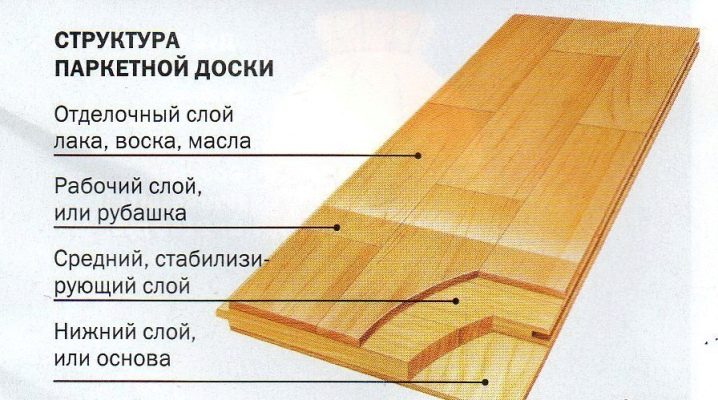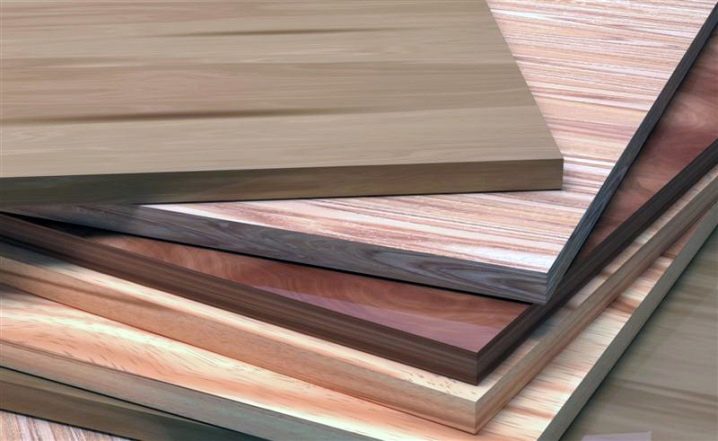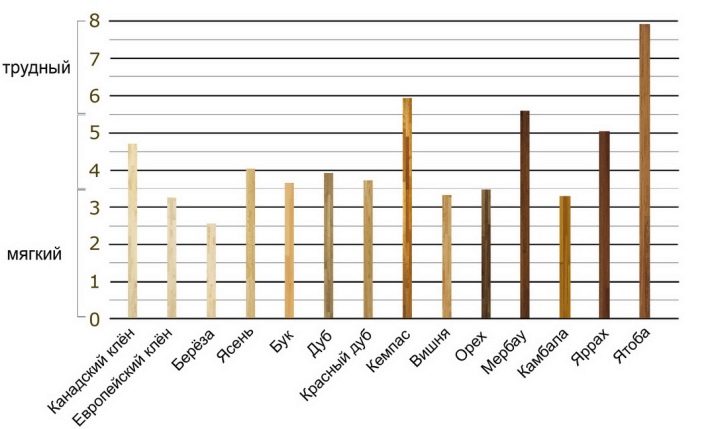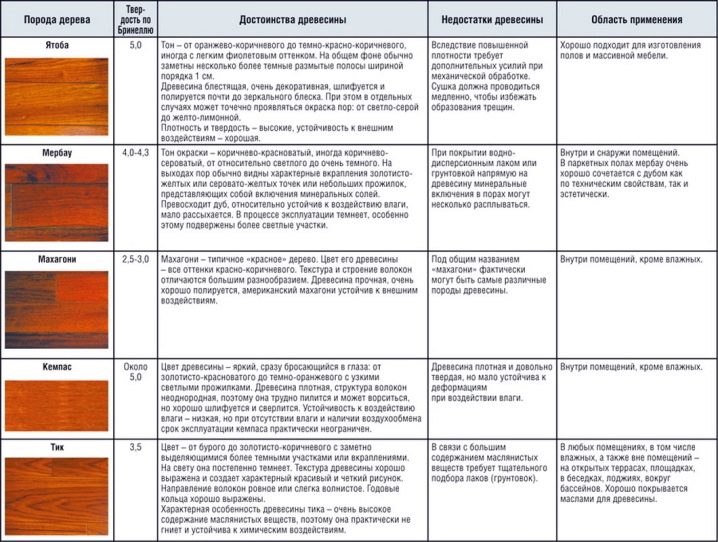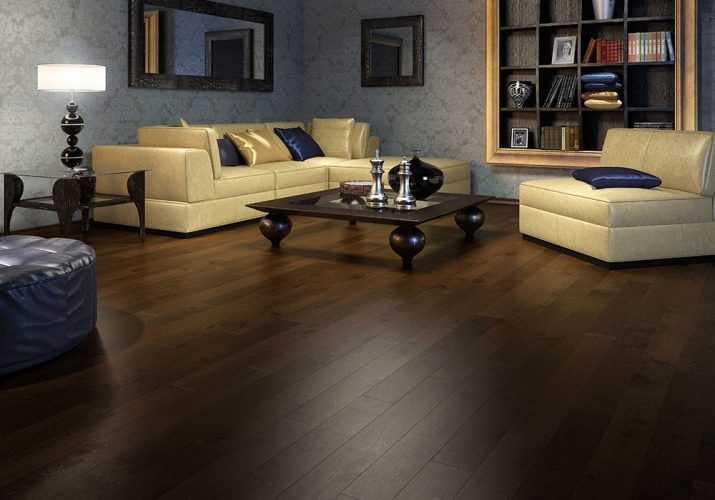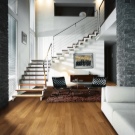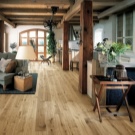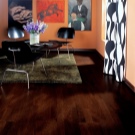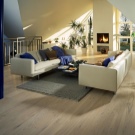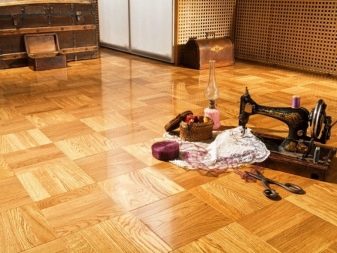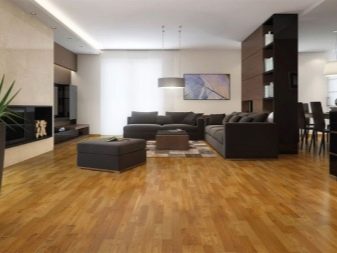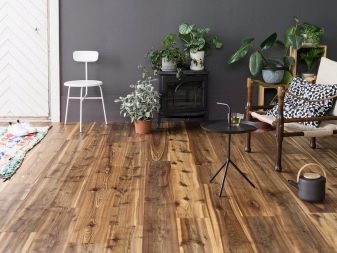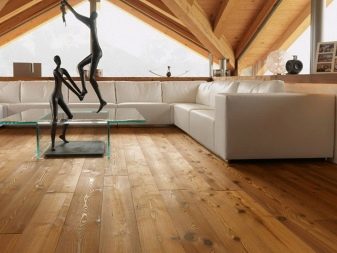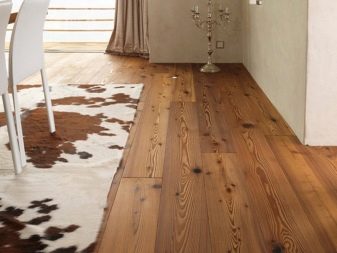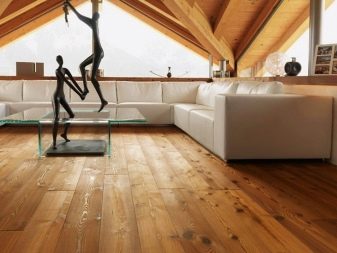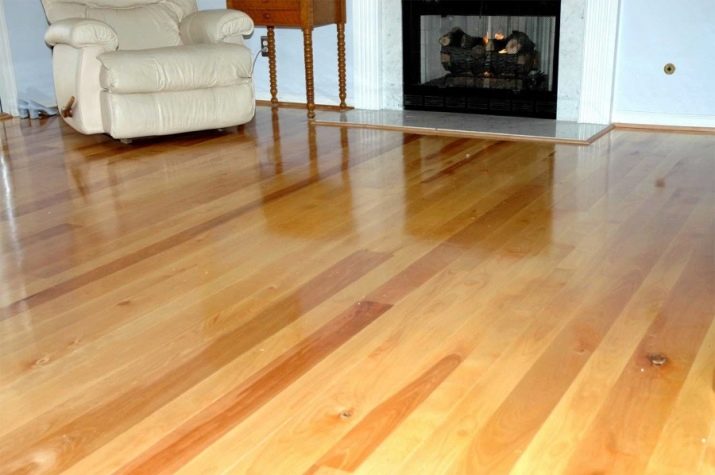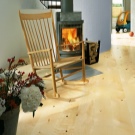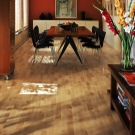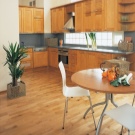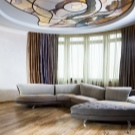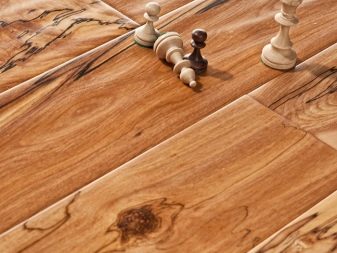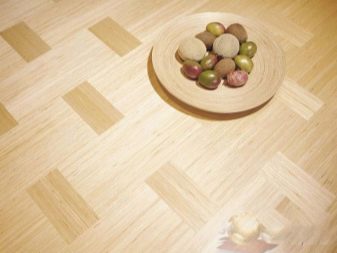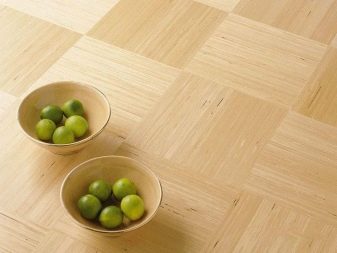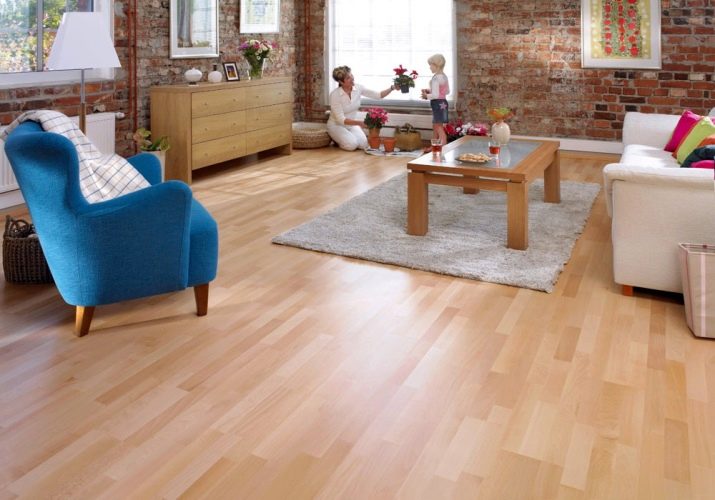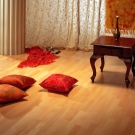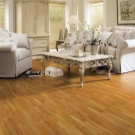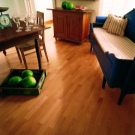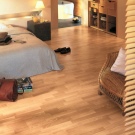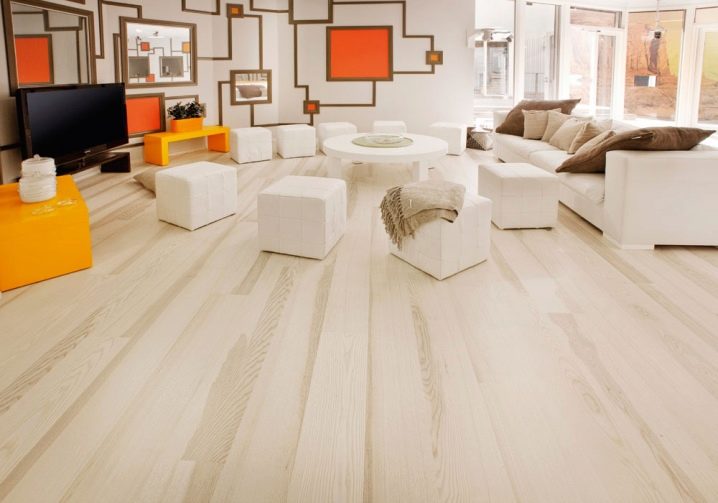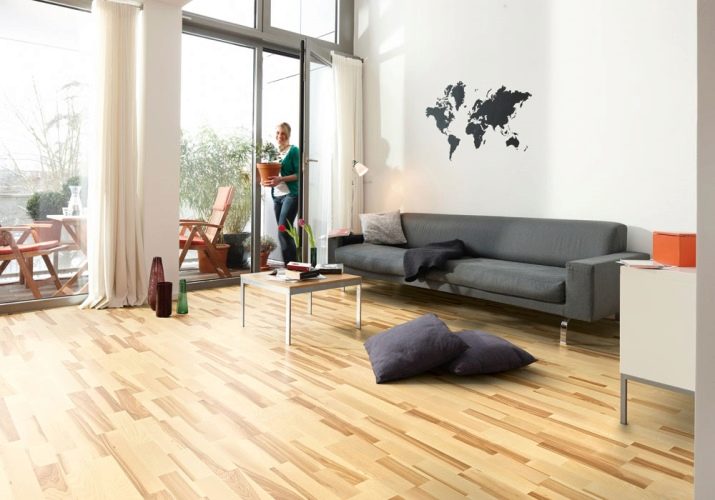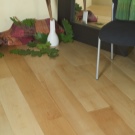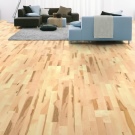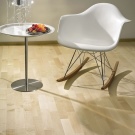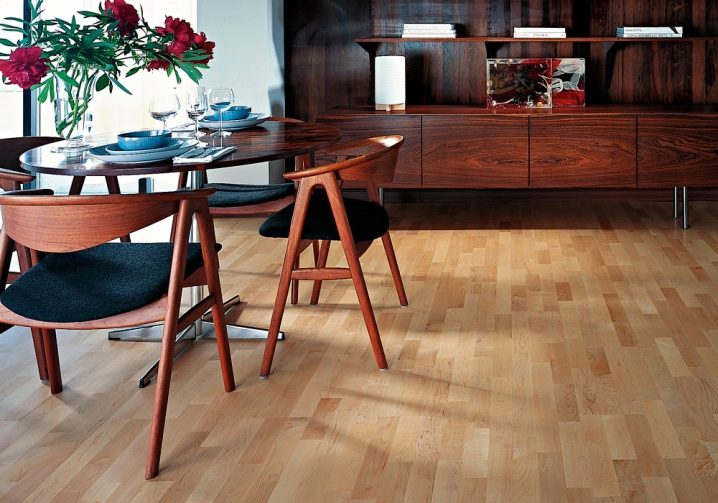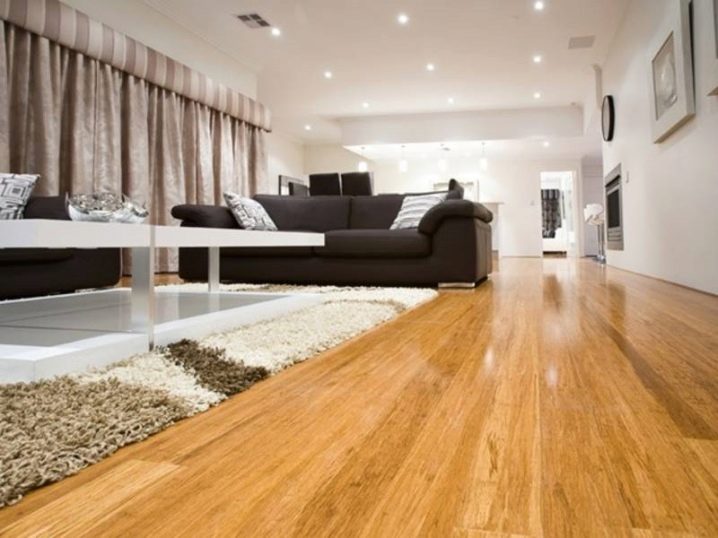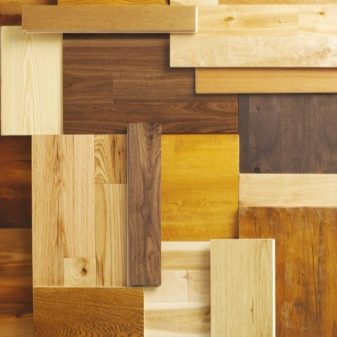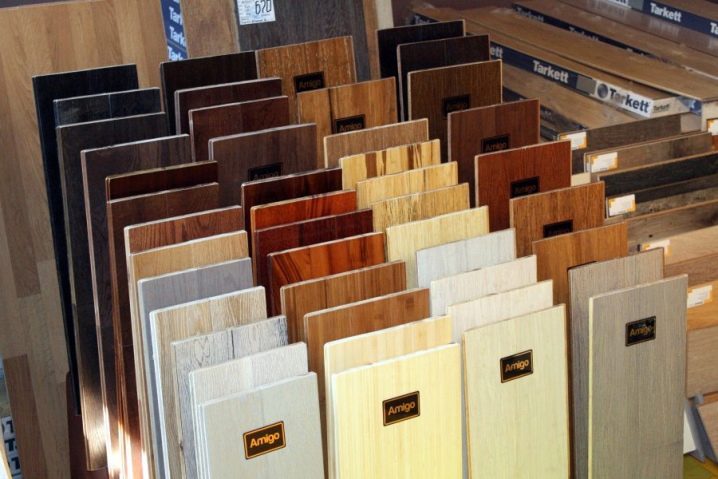What kind of wood make parquet?
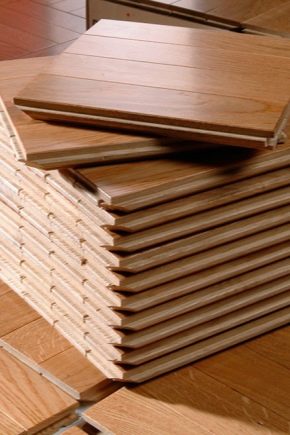
For a house to have a heated floor is a vital necessity, and you understand it especially clearly in winter when, tired and frozen, you take off your shoes and walk on for some reason the cold floor. And after all, few people realize that this problem can be solved by replacing ordinary laminate or stone with natural parquet, because like no one else, it retains heat better. However, in order to choose the right coverage, you need to answer a number of questions. In this article we will look at what parquet is, what parquet of wood is made of, and what you should pay attention to when choosing.
What is parquet?
Parquet is a flooring made of natural wood. There are two types: directly parquet and floorboard (or parquet floor). The parquet board consists of three layers of wood glued together, the first and second of which are coniferous boards (pine or spruce), and the top one is a directly valuable breed; Each layer has a thickness of no more than four millimeters, but due to the fact that the lamellae (middle row boards) are glued across, the design has enough density to exploit.
Parquet is a solid board made of solid wood of valuable species, which increases its value by several times.
From above, both one and the other product are varnished, and sometimes a special pattern is applied. It is easy to install, it is easy to take care of it, if used properly, such a coating can last more than a dozen years. However, both parquet and parquet can fade - natural wood is still, and, depending on the type of wood, the boards can be unstable to moisture, they can be traces of particularly long claws of dogs and cats, as well as too corrosive odors .
Properties of wood flooring
It is customary to distinguish three main properties of wood, based on indicators by which you can choose high-quality parquet boards. This is the density, measured in kg / m cubic, and hardness in n / mm square. It is also impossible not to say about the stability of the tree - its immutability with respect to weather conditions, the environment and humidity. The stability index should be specified in the catalog of the store / manufacturer.
- 5 points stability suggests that the boards are not deformed even with its large differences. Such stability is called absolute.
- 4 points - high stability. In fact, it does not deform, and if there is a deformation, then it is short-lived.
- 3 points - relative stability. The wood is deformed slightly with large drops of humidity.
- 2 points - average. Wood is slightly deformed with small drops of humidity.
- 1 point - low. Deformed significantly even with small drops.
The properties of the parquet, no matter what tree it is made of, will be poured in with what this tree will be covered with - varnish or oil. The coated boards are felt warmer, the oil hides all minor flaws and scratches at the time of processing and during operation.
Varnished boards are not as democratic in relation to scratches - any mechanical damage on them is noticeable. Lacquer coating is virtually impossible to update on their own, for this every five to six years will have to invite a professional.
Wood species for parquet
Oak
Oak is considered to be the most popular tree for making parquet. It is universal and will look authentic in any interior. The advantages and disadvantages of oak parquet are that, firstly, it only becomes stronger and stronger with time, does not fade, but, on the contrary, becomes noble. Oak parquet is really easy to find out - it stands out against the background of other patterns in the form of annual rings, which can often be seen on the trunk of an oak tree.
Against the background of other tree species, the oak tolerates moisture well - one can even say that it is 4 points of stability. Not by 5, since the properties of this tree largely depend on the area in which it grew. For example, an oak grown in dry soil will be hard, slightly elastic, yellowish. The oak from the mountainous regions of the planet has a rather pinkish tinge, and the oaks from the northern parts are considered the strongest, as they grow in difficult climatic conditions.
Oak is often amenable to special treatment - it is stained, thus dimming up to virtually dark purple hues (hence, bog oak). The density of oak is 700 kg / m3, and the hardness is 3.9 n / mm2.
Larch
The strength is actually not inferior to oak - moreover, it does not rot because of the presence of special resins, which also gives grounds to say that it is not subject to deformation. On the parquet of this wood, annual rings are easily visible, and as a whole, larch, thanks to its natural and noble golden shade, gives the room a glow and expands the space. Its density is 665 kg / m3, hardness is 2.5 n / mm2, and stability is the same as in oak - 4.
Birch tree
Primordially Russian plant, also used in the manufacture of parquet. Its density is 650 kg / m3, the hardness is 3.5 n / mm2, and the stability is 3. It is rather pleasant and outwardly touchy wood, as a rule, presented in light shades - a milky-white tone with impurities of yellow or pink.
The pattern of the birch parquet is not pronounced, since the annual rings near the tree itself are faint. However, what follows from the low stability, it becomes clear that the birch is prone to rotting and is able to deform with large drops of humidity. Acquiring an antiseptic can help with this.
The Karelian birch stands apart, since after processing it acquires the so-called “marble” shade and gloss, therefore it is worth and valued more and more than usual. Often used for decorative inserts on the floor, very rarely - as the main array.
Beech
Although it has a really beautiful pattern and a smooth coating without knots, it is subject to deformation - both from the water and temperature side, and due to physical injuries (pets' claws, objects dropped from a great height). It is undoubtedly attractive and has a wide palette of shades (from light to pinkish). Beech stability is only 1 point (it behaves well in places where the humidity does not exceed 55%), hardness - 3.8 n / mm2, density 680 kg / m3.
Ash
It is very much in demand by the manufacturers of parquet, since its wood is unusually resilient and elastic, undergoes virtually any treatment - both staining, and brushing (to impart the effect of aging), and tinting, and heat treatment. In the colors of this stunning tree you can find both light ash and yellowish or pink, there would be a desire. Stability - 2, hardness - 4 n / mm2, density - 700 kg / m3.
Maple
The most brilliant material of all proposed. Its brilliance is noticeable both in the sun and in cloudy weather, as it reflects light. Some kind of special pattern of such wood is not different - one can even say that the maple has a completely clean surface, because the tree rings on it are not completely noticeable, and the heart-shaped rays are barely visible.
For parquet production, Canadian maple is used, featuring an ideally even cut without knots and hitch, famous for its durability. Maple is a light wood, and the parquet of similar shades can visually expand the room. Stability - 2, hardness - 4, 5 n / mm2, density 530-650 kg / m3.
Cherry
Separate mention is cherry - this dark pink tree attracts, first of all, with its shade. Dark parquet is generally in high demand among consumers, while American cherries, which are quickly gaining popularity, are called black, for example.
Cherry wood is used in the manufacture of parquet, as it is medium flexible, convenient for processing, of low rigidity. Cherry parquet colors range from dark pink to almost black, maroon,and the natural pattern is striking - here there are very authentic patches of dark, and tree rings, and a stunning matte and smooth surface. Cherry density varies between 590-600 kg / m3, hardness - 3 N / mm2. Stability Index - 4 points.
Bamboo
Such a parquet has recently gained particular popularity. This coating is made of bamboo fibers, specially treated and glued horizontally or vertically, which at the very end of manufacture varnish. The color of bamboo varies from dark coffee to light yellow. Glitter may or may not be present.
Bamboo parquet attracts with its low price, durability and wear resistance, resistance to deformation (does not get wet, refractory), exoticism and environmental friendliness. The density of bamboo is about 800 kg / m3, and its hardness is 4.5 n / mm2. Stability Index - 4 points.
They also distinguish wood species by shade: as in the production of parquet, wood does not lend itself to additional processing, which would be able to radically change its appearance.
They are distinguished by dark (light oak, wenge), light (birch, ash, oak, maple, bamboo), yellow (olive, teak), red (Yarra, kempas, yatoba), pink (alder, beech, cherry, pear) and brown (or coffee colors) (walnut, rosewood) wood shades.Remember that oak, ash, maple, beech every year will become deeper, while the shade of cherry, yarra and yatoba - darken.
Regardless of which tree species you choose, you need to consider that each parquet also has a grade. This match the texture, color and the presence / absence of knots and cracks on the board. There are three varieties:
- Select Standard, rigorous variety, does not allow any knots or cracks; boards of this grade will strictly match each other in texture and color temperature.
- Natur. Slightly less categorical than his brother, allows insignificant but noticeable changes in colors, shades and temperatures. A small number of cracks or notches can also be seen on wood.
- Rustic. For him, there are no restrictions on color at all; these can be boards that are quite different from each other. Accordingly, at a cost it is cheaper than all the others.
How to choose?
First of all, you need to decide on the flooring or floorboard you desire. If you focus only on the external aspect, then the difference is almost invisible - the main thing is that the top layer of the floorboard - a layer of expensive wood - was of high quality and not thinner than 4 mm. However, the solid parquet will last longer - it will be possible to assemble and shift it.But in this case the price creates many problems.
Regardless of whether you choose parquet or plank, you should pay attention to some points when buying:
- The parquet should be hermetically packed in polyethylene and placed in a cardboard box without holes or any cracks. All this is a guarantee that the boards will not be damaged during transportation, water and sunlight, dirt, and dust will not fall on them.
- Manufacturer. In general, we advise you to look for information about the manufacturer and the store where you buy coverage on the Internet, especially on sites with reviews.
- Also at the selection stage, you can check the moisture of the parquet with a moisture meter - it should be 8-10 percent, which is a guarantee that it was properly produced, stored, and it does not deform during installation.
- Of course, there should not be any stains, burns, cuts and scratches on the tree. This may indicate both improper storage and handling of the tree, as well as improper handling.
- It is very important that the boards of the parquet are absolutely identical - one width, thickness and length, together they should form a perfectly smooth surface without hillocks and crevices.
Thus, if you do not want to make a mistake in choosing a coating, stop your decision on the oak version. If you are a supporter of the new - take a look at the description of the parquet of larch or bamboo. For lovers of original designs, of course, suitable cherry or maple.
See the following video for what types of wood are used to make parquet.

